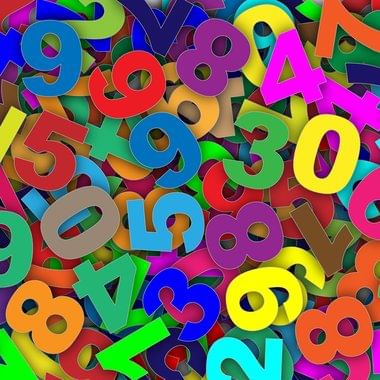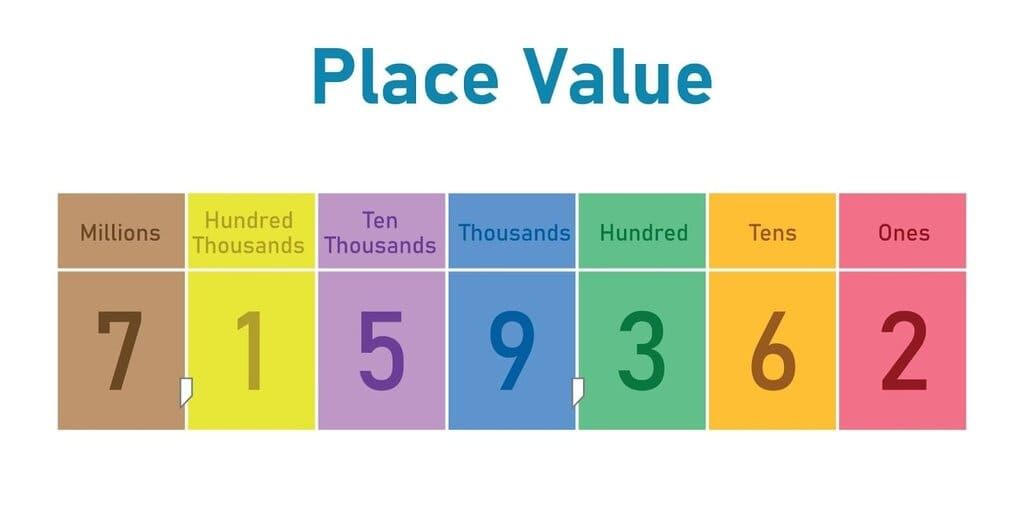Class 4 Exam > Class 4 Notes > Year 4 Mathematics IGCSE (Cambridge) > Chapter Notes: Numbers and The Number System
Numbers and The Number System Chapter Notes | Year 4 Mathematics IGCSE (Cambridge) - Class 4 PDF Download
Counting and sequences

- Focuses on counting forwards and backwards in steps of constant size, including tens, hundreds, and thousands, starting from any number.
- Includes counting back through zero to incorporate negative numbers, such as −2.
- Introduces the concept of sequences, specifically linear and non-linear sequences.
- A linear sequence has a constant difference between consecutive terms, described by a term-to-term rule (e.g., "add 2").
- A non-linear sequence does not have a constant difference, as the amount added or subtracted varies each time.
- Students learn to extend sequences by applying the term-to-term rule to find subsequent terms.
- Involves recognizing and extending patterns that represent square numbers (e.g., 1, 4, 9, 16, …).
- Example of a linear sequence: Starting at 8 with the rule "subtract 2" gives 8, 6, 4, 2, 0, …
- Example of a linear sequence with a constant difference: 60, 110, 160, … (increases by 50 each time).
Key terminology includes:
- Difference: The amount added or subtracted between terms.
- Negative number: A number less than zero.
- Rule: The instruction for generating the next term.
- Sequence: An ordered list of numbers following a specific pattern.
- Spatial pattern: A visual arrangement of numbers or shapes.
- Term: An individual number in a sequence.
- Term-to-term rule: The operation used to find the next term.
More on negative numbers

- Focuses on using negative numbers in real-world contexts, such as temperature or elevation (e.g., above or below sea level).
- Students learn to read and write numbers less than zero, e.g., −6 is written as "negative six."
- Negative numbers are applied to describe scenarios like very cold temperatures or positions below sea level (e.g., an iceberg floating with most of its mass below sea level).
- Involves performing calculations with negative numbers, such as finding the temperature difference.
- Example: If the temperature in England is 11°C and Iceland is 15°C colder, the temperature in Iceland is calculated as: 11 − 15 = −4°C
- Number lines are used to visualize and calculate with negative numbers, helping to show connections between values.
Key contexts include:
- Temperature: Negative numbers represent degrees below zero (e.g., −10°C).
- Elevation: Negative numbers indicate positions below sea level (e.g., −20 meters).
Understanding place value

- Focuses on reading and writing whole numbers greater than 1000, including thousands, ten thousands, and hundred thousands.
- Students learn to identify the value of each digit in a number based on its position (place value).
- Example: In the number 829, the place value table is:
- 100s: 8 (value = 800)
- 10s: 2 (value = 20)
- 1s: 9 (value = 9)
- Involves multiplying and dividing whole numbers by 10 and 100, understanding how digits shift:
- Multiplying by 10 shifts digits one place to the left (e.g., 606 × 10 = 6060).
- Dividing by 10 shifts digits one place to the right (e.g., 350 ÷ 10 = 35).
- Multiplying by 100 shifts digits two places to the left (e.g., 35 × 100 = 3500).
- Dividing by 100 shifts digits two places to the right (e.g., 3400 ÷ 100 = 34).
- Introduces composing (putting together) and decomposing(splitting) numbers:
- Example: 805,469 can be decomposed as 800,000 + 5000 + 400 + 60 + 9.
- Explores the effect of multiplying by 10 (e.g., in 606 × 10 = 6060, the digits shift left, and a zero is added as a placeholder).
Key terminology includes:
- Compose: Combine parts to form a number.
- Decompose: Break a number into its place value components.
- Equivalent: Numbers or expressions with the same value.
- Hundred thousand: 100,000.
- Million: 1,000,000.
- Place holder: A digit (often 0) that holds a place in a number.
- Regroup: Reorganize numbers for calculations.
- Ten thousand: 10,000.
- Thousand: 1000.
The document Numbers and The Number System Chapter Notes | Year 4 Mathematics IGCSE (Cambridge) - Class 4 is a part of the Class 4 Course Year 4 Mathematics IGCSE (Cambridge).
All you need of Class 4 at this link: Class 4
|
72 docs|20 tests
|
FAQs on Numbers and The Number System Chapter Notes - Year 4 Mathematics IGCSE (Cambridge) - Class 4
| 1. What is the number system and why is it important in mathematics? |  |
Ans. The number system is a way of representing and working with numbers. It includes different types of numbers such as natural numbers, whole numbers, integers, rational numbers, and irrational numbers. Understanding the number system is crucial in mathematics because it forms the foundation for various mathematical concepts and operations, enabling us to solve problems and understand relationships between numbers.
| 2. How do angles relate to the number system? |  |
Ans. Angles can be measured in degrees or radians, which are numerical representations of rotation. In the context of the number system, angles can be associated with real numbers, as they can take on any value within a range (e.g., 0° to 360° for degrees). This relationship is important in trigonometry and geometry, where angles play a significant role in determining shapes, sizes, and properties of figures.
| 3. What are the key differences between rational and irrational numbers? |  |
Ans. Rational numbers are numbers that can be expressed as the quotient of two integers, where the denominator is not zero (e.g., 1/2, -3, 4.5). In contrast, irrational numbers cannot be expressed as a simple fraction and have non-repeating, non-terminating decimal expansions (e.g., √2, π). Recognizing these differences is essential for understanding the number system and its applications in mathematics.
| 4. How can I improve my understanding of the number system? |  |
Ans. To improve your understanding of the number system, practice solving problems related to different types of numbers, such as converting between fractions and decimals or working with integers. Utilize resources like textbooks, online tutorials, and interactive exercises. Engaging with peers or seeking help from a tutor can also enhance your comprehension and provide different perspectives on the concepts.
| 5. What are some common exercises related to angles and the number system? |  |
Ans. Common exercises include calculating the measures of angles in various geometric figures, converting angle measures between degrees and radians, and solving problems that involve the properties of angles in triangles and circles. Additionally, exercises may require applying trigonometric functions to find missing angle measures or side lengths, integrating concepts from both angles and the number system.
Related Searches





















